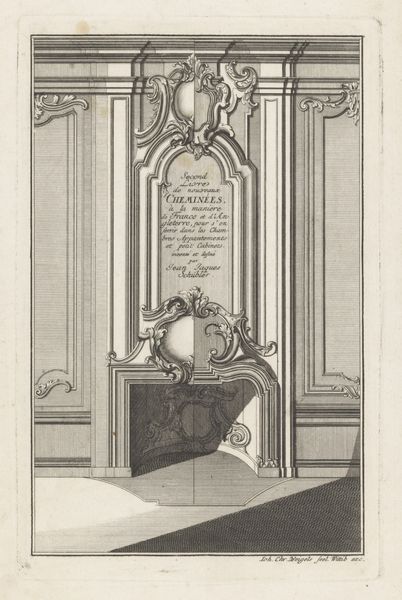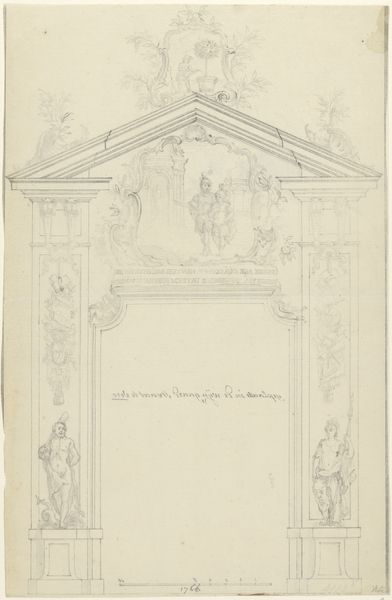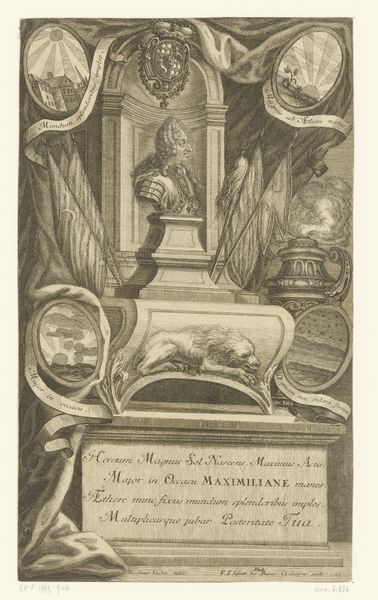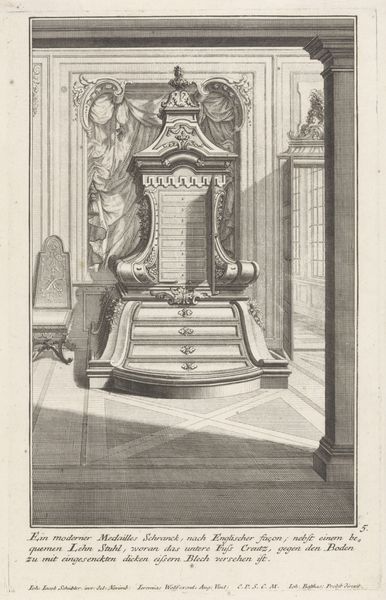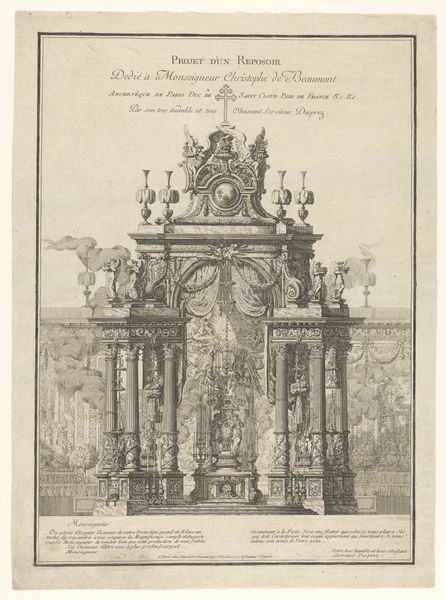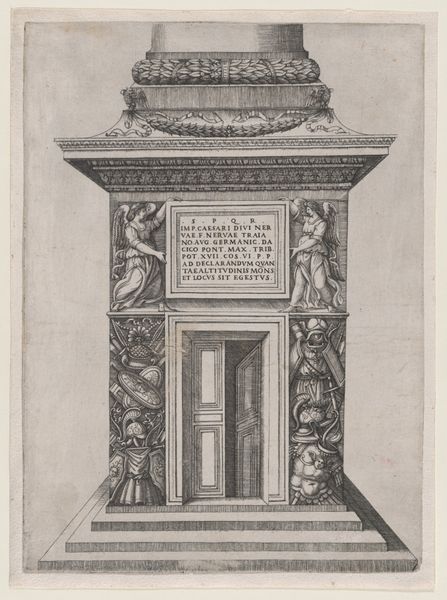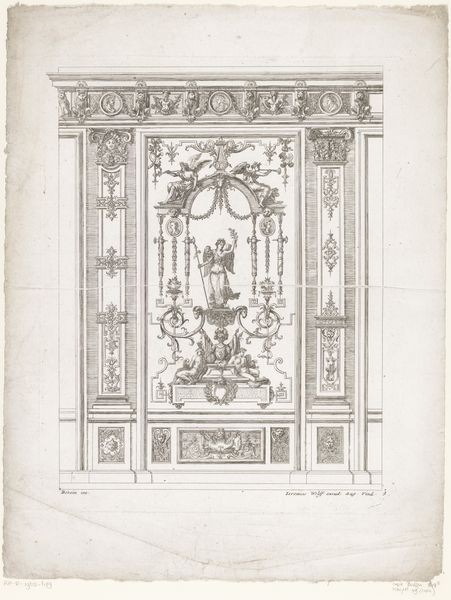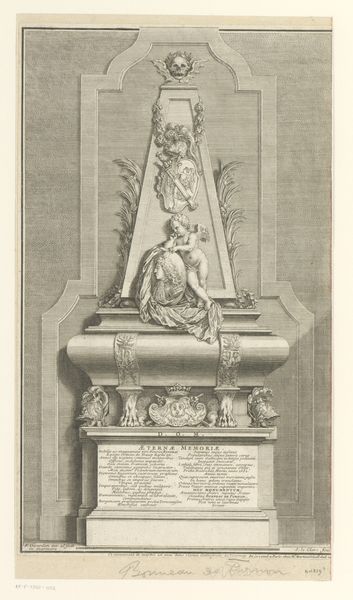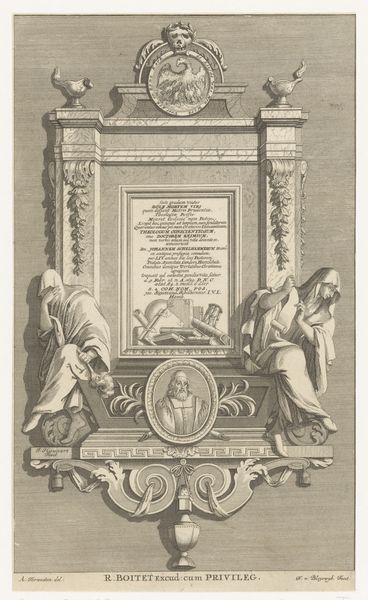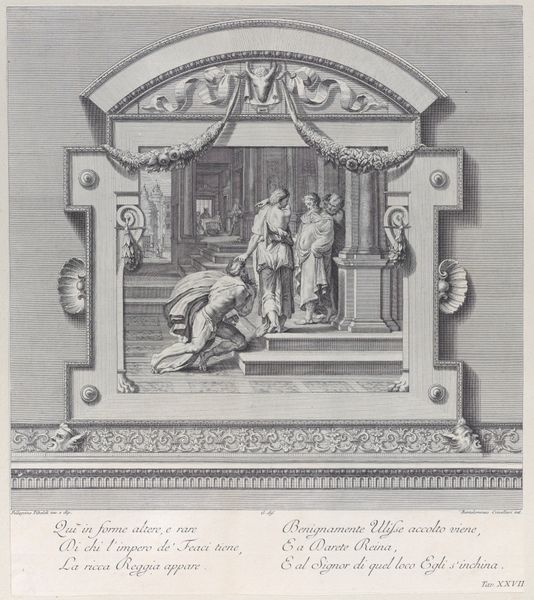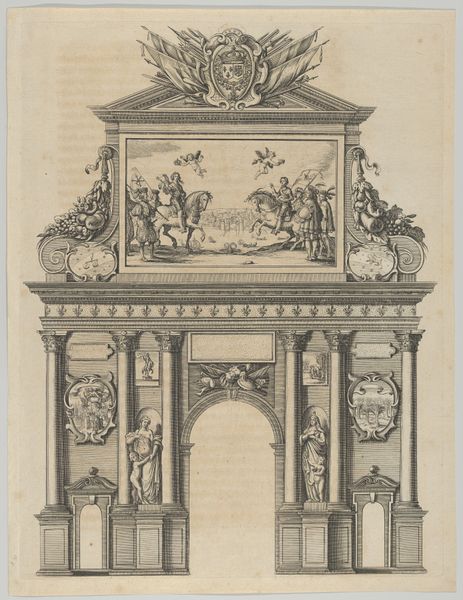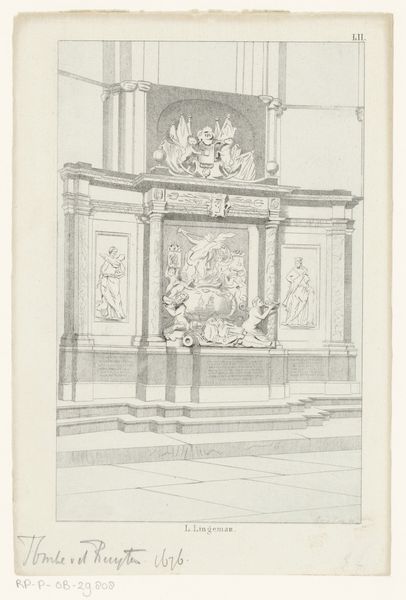
Catafalque for Duchess Maria Cesi of Altemps (Hohenems); from 'Libro De Catafalchi, Tabernacoli, con varij designi di Porte fenestre et altri ornamenti di Architettura' 1609
0:00
0:00
drawing, print, engraving, architecture
#
architectural sketch
#
drawing
#
baroque
# print
#
book
#
old engraving style
#
mannerism
#
history-painting
#
engraving
#
architecture
Dimensions: Sheet: 16 3/16 × 10 15/16 in. (41.1 × 27.8 cm) Plate: 14 5/8 × 9 13/16 in. (37.2 × 25 cm)
Copyright: Public Domain
Curator: Editor: This engraving, "Catafalque for Duchess Maria Cesi of Altemps," was created in 1609 by Marcus Antonius Magnus. It seems so detailed, almost architectural. What strikes me is how the artist renders this elaborate structure – what do you make of it? Curator: I'm interested in how this engraving blurs the line between representation and the thing itself. Look at the depiction of the catafalque – a temporary structure erected for a funeral. It's not just an image; it's a record of a performative act of material culture. The engraving itself becomes another layer in this process. Editor: So, you’re focusing on the production of the print rather than its artistic quality? Curator: Exactly! What does the material nature of the print, the labor involved in its creation, tell us about the social function of mourning and memory in this period? Was it meant for broad distribution, reinforcing power? Consider too, the economics of printmaking. Were these images commodities, and how did their production reflect and influence the artistic hierarchies of the time? Editor: So the act of creating multiple prints changes our understanding. This image wasn't just about honoring the Duchess; it was about something else entirely. Curator: Precisely! And remember to note how an ephemeral construction can be spread more widely through engravings. Look also at the chosen inscriptions and how they frame nobility! Who commissioned it? Why printmaking instead of other forms of memorialization? Editor: That is something to keep in mind. I see how looking at it this way changes how we consider art's role in culture and society. Curator: It brings focus back to making and impact of reproducibility instead of artistic quality and personal impression!
Comments
No comments
Be the first to comment and join the conversation on the ultimate creative platform.
